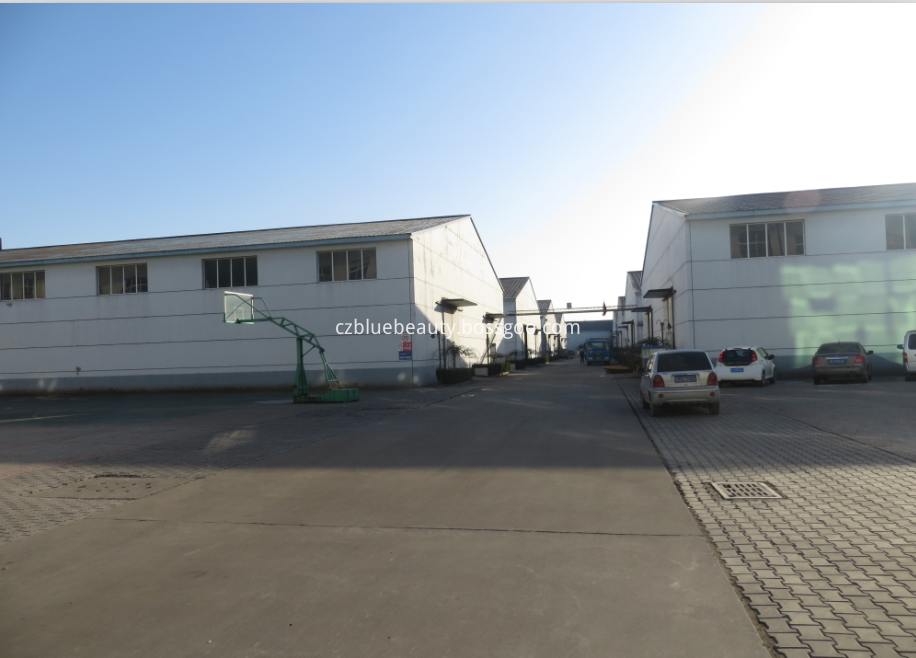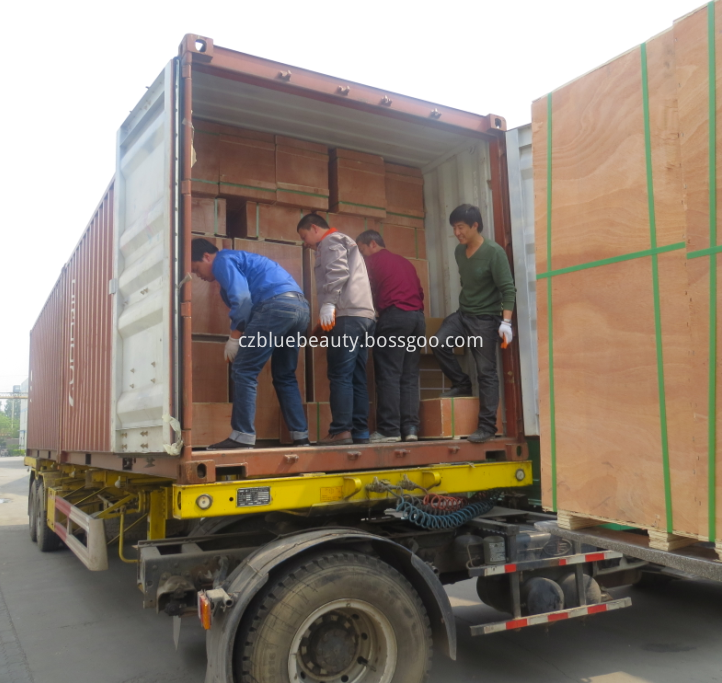Author: Wang Feng-ming, either directly Author: Chinese Academy of Medical Sciences - China Beijing Union Medical College Hospital Neurosurgery Union Medical College, Beijing 100730, China
Abstract: In recent years, stem cells have been widely used in the treatment of nervous system diseases, blood diseases and heart diseases. After stem cell transplantation, the survival and migration of living stem cells is of great significance. The development of molecular imaging technology has made it possible to trace stem cells in vivo. Optical imaging, magnetic resonance imaging, single photon emission computed tomography, and positron emission tomography are commonly used in clinical and experimental molecular imaging methods. Advantages and disadvantages. This paper reviews the research progress and application prospects of the above imaging methods in stem cell in vivo tracing.
[Key words] molecular imaging stem cell transplantation fluorescent antibody technology
Stem cells are cells with self-renewal and multi-directional differentiation potential, and have broad application prospects for cerebrovascular diseases, neurodegenerative diseases, hematological diseases, and ischemic cardiomyopathy. The development of molecular imaging has made it possible to trace the survival and migration of transplanted cells in a living state.
Weissleder [1] proposed the concept of molecular imaging in 1999 to evaluate biological processes at the cellular and molecular levels, including the survival and migration of tracer cells in vivo. At present, the techniques of molecular imaging for stem cell live tracing mainly include optical imaging, magnetic resonance imaging, and nuclear medicine imaging. The latter mainly includes single photon emission computed tomography (SPECT) and positron emission computer. Posedential emission tomography (PET).
1 optical imaging
The optical imaging technology for detecting gene expression and cell activity in living animals has the advantages of simple operation and strong intuitiveness. The key is to design a biocompatible NIR fluorescent dye, develop a specific image probe, and synthesize an excitable organism. Luminescent protein [2]. Optical imaging includes bioluminescence imaging and fluorescence imaging. The former utilizes autofluorescence in animals without the need to excite a light source; the latter requires an external excitation source.
1.1 Bioluminescence Imaging Bioluminescence technology uses luciferase gene to label stem cells or DNA, which is illuminated by the specific action of enzymes and substrates. Since the animal body does not emit light by itself, the bioluminescence background is extremely low, and the number of luminescent cells can be directly derived from the signal level of the animal's body surface. Maxwell et al [3] labeled hematopoietic stem cells with fluorophore-bound iron oxide nanoparticles for fluorescence imaging; combined with flow cytometry, stem cell marker efficiency and homing ability can be evaluated. Rosen et al [4] used nano-fluorescent probes to label mesenchymal stem cells and implant them into mammalian hearts. After 8 weeks, transplanted cells were still visible.
1.2 Fluorescence imaging Fluorescence technology uses fluorescent reporter genes, such as fluorescent dyes such as green fluorescent protein (GFP) to label stem cells, and reporter genes and fluorescent dyes are excited to generate fluorescence. Fluorescence imaging has a wavelength range of 400 to 900 nm, and common fluorescent materials have different wavelength ranges to choose from [5]. This technology is simpler to operate than bioluminescence, without the need to inject a substrate, and has a high luminous intensity. However, many substances in the living body will produce strong autofluorescence after being excited by the excitation light, which will seriously affect the sensitivity of the detection, especially when the luminescent cells are located inside the tissue, the background color will be high. The main advantage of this technology is that it is non-radiative, continuous, real-time monitoring, high sensitivity and resolution, and relatively low cost. The penetrating power of light is very limited, only a few millimeters to several centimeters. Therefore, fluorescence imaging is often used for experimental research in small animals. In addition, due to scattering and the like, its spatial positioning ability is poor.
2 magnetic resonance imaging
MRI is the most commonly used imaging method. Due to the long effective imaging time, the dynamic migration process of cells can be observed, with high spatial and temporal resolution and good contrast. Therefore, its prospect is promising.
MRI relies primarily on longitudinal (T1), lateral (T2) relaxation times, and the difference in relaxation time before and after use of contrast agents for diagnosis. There are two commonly used contrast agents: one is guanidine (Gd3+), T1WI is high signal, also known as positive contrast agent; the other is superparamagnetic contrast agent, such as SPIO (superpara-maganetic iron oxide) and USPIO ( Ultra-small superparamagnetic iron oxide, T2WI and T2*WI (sensitive to iron particles) is a distinctly low signal and is called a negative contrast agent. Gd3+-labeled cells can only be detected within 1 week after transplantation and cannot be used for long-term monitoring of cell survival and migration [6]. SPIO is more stable in the body and can provide better contrast; Jushenghong et al [7] used domestic magnetic nanoparticles to label human umbilical cord blood mesenchymal stem cells, and obtained satisfactory results. The use of SPIO-labeled stem cells alone is less efficient, and transfection agents can significantly increase labeling efficiency. Commonly used transfection agents include protamine (PRO), polylysine (PLL), and dendrimer (Dendrimer); among them, cation transfection agent PLL is the most widely used, and it binds to SPIO by charge adsorption. Can be effectively engulfed by endosomes. Philip magnetic (Feridex-PLL) has no effect on the viability and proliferation of mesenchymal stem cells [8], but can inhibit the differentiation of stem cells into cartilage [9], but the differentiation into fat and bone is not affected.
At present, magnetic resonance can detect very small numbers of cells or even single cells [10]. Hoehn et al [11] used USPIO-labeled rat embryonic stem cells and implanted into the subcortical and striatum of the contralateral side of rat cerebral ischemia. After several days, MRI showed the path of transplanted cells to the ischemic area. Wei Junji et al [12] implanted human bone marrow stromal cells (hBMSC) labeled with Feridex into the ipsilateral and contralateral brain parenchyma of cerebral ischemia rats. MRI showed that on the 14th day after transplantation, hBMSCs in the ipsilateral ischemic transplantation group The edge of the ischemic lesion migrated, and the ischemic contralateral hBMSC diffused along the corpus callosum. Ju et al [13] used SPIO-labeled murine BMSC to implant a rat liver injury model. MRI can observe transplanted cells in vivo, and histological examination confirmed the presence of surviving BMSC in the liver.
Labeling stem cells with SPIO has many advantages: good signal contrast, especially in T2WI and T2*WI; contrast agents consist of biodegradable iron, which participate in iron metabolism after decomposition and can be reused by the body; the core layer is covered with dextran, It can be directly combined with various functional groups; it can be easily observed by light or electron microscope; by changing the size of the particles, the magnetic effect can be adjusted. However, the application of SPIO also has some limitations: iron particles can cause signal loss, resulting in a so-called black hole effect, which directly affects the display of MRI-related anatomical structures, and cannot distinguish between magnetic sensitivity artifacts caused by transplanted cells and artificial implants; The non-genetic material carried is gradually reduced, excreted outside the cell and taken up by other cells. The current findings indicate that labeled cells can be detected by MRI at least within 18 weeks after transplantation [14].
3 nuclear medicine imaging
SPECT and PET are imaging techniques for radionuclide tracing. The imaging principle of PET determines that it has higher spatial resolution and sensitivity than SPECT, and it is the most widely used in the nervous system [15]. SPECT scans require a collimator that detects only a small fraction of the gamma-rays emitted by the body, affecting its sensitivity; in addition, scattering also reduces its spatial resolution [16].
Various tissues or cells have specific or relatively specific molecular markers, and these specific markers are labeled as appropriate probes by appropriate radionuclides, and the presence and state of tissues and cells can be displayed in vivo. Depending on the molecule of interest and the probe, nuclear medicine imaging can be divided into metabolic imaging, antibody imaging, receptor imaging, reporter gene imaging, and antisense imaging.
3.1 Metabolic imaging It is widely used in clinical research. The most commonly used molecular probes are metabolic substrates or analogs of tissues and cells. For example, fluorine-18-deoxyglucose (18F-FDG) is an analog of glucose. After being taken up by cells, it is phosphorylated by the action of hexokinase, and then stays in the cell to concentrate and is no longer involved in metabolism. The 18F-FDG scan can reflect the metabolism of glucose, which indirectly reflects the condition of the disease [17]. Hofmann et al [18] studied the homing of 18F-FDG-labeled BMSCs in the myocardium of patients with myocardial infarction, and found that transplanted cells were found in the myocardial infarction area (mainly the edge of myocardial infarction). Since glucose and amino acid metabolism are multi-channel, multi-molecularly regulated, the specificity of using metabolic imaging to trace stem cell proliferation is low. Doyle et al [17] used 18F-FDG to label precursor cells, treat myocardial infarction by coronary artery transplantation, and observe cell survival dynamically by PET or CT. Stelljes et al [19] used 18F-FDG-PET as a sensitive, non-invasive method to detect graft-versus-host disease (GVHD).
3.2 Antibody imaging Antibody imaging uses the specific binding of antigens and antibodies, and uses antibodies as probes to detect the presence of cell surface antigens. The key to this technology is to obtain homologous antibodies and construct small, lipid-soluble antibodies.
3.3 Receptor imaging Receptor imaging is the introduction of a radiolabeled ligand into the body, binding to a specific receptor, thereby showing the receptor's action. Receptor imaging is most likely to first enter the field of stem cell live tracing. Neuroreceptor imaging agents have relatively mature drugs or drug derivatives as labeling substrates. Domestic researchers used 11C-raclopride to bind to the D2 receptor for PET imaging, and observed significant radioactive concentration in the graft site of neural precursor cells [20].
3.4 Reporter Gene Imaging Reporter gene imaging couples a reporter gene (such as GFP) to a target gene and indirectly reflects the expression of the target gene by measuring the phenotype protein. A reporter gene can be coupled to multiple target genes, and a reporter gene system can be used for multiple gene imaging. However, the reporter gene must be coupled to the target gene in vitro and then introduced into the animal or human body using the vector.
3.5 Antisense imaging Antisense imaging uses a chelating agent to link a nuclides to an antisense oligonucleotide, and complements and complements the mRNA of the target gene in the cell to visualize the transcription of the target DNA. Although this technology is not yet mature, it may be the ultimate way to completely solve the stem cell live tracing technique.
The use of PET to trace stem cells has great advantages in sensitivity and quantitative analysis, and has achieved good results in stem cell transplantation for Parkinson's disease research. However, the current nuclear medicine imaging still can not completely solve the problem of stem cell live tracing, the main reason is the lack of specific stem cell markers. With the discovery of stem cell-specific markers and the development of molecular probe technology, PET will become the most promising molecular imaging technology for tracer stem cells.
Illumination Incubator is use in plant laboratory. Illumination Incubator with over-temperature sensor abnormal protection, security equipment and sample safety; optional full-spectrum plant growth lights , is conducive to plant growth and improve disease resistance. With power-down memory, power-down time automatic compensation function; constant temperature control system, fast response, high precision temperature control.
GZP series of intelligent illumination incubator adopts advanced microcomputer control, is with light, cold and hot temperature, day and night automatic switching procedures and over-temperature protection to simulatenatural climate laboratory equipment. And has a 30-segment program control, computer connections, LCD, over-temperature protection etc functions. Can be used as seed germination, seedling, plant cyclecultivation, microbial culture, insects and small animals feeding and other thermostats, light requirementsexperiment.We have 250L 300L 400L volume incubators, and you can choose the suitable models.


Factory photos:



Illumination Incubator
Illumination Incubator,Lab Illumination Incubator,Industrial Lighting Incubator,Small Illumination Incubator
Cangzhou Blue Beauty Lab Instrument Co., Ltd. , https://www.czlabinstrument.com